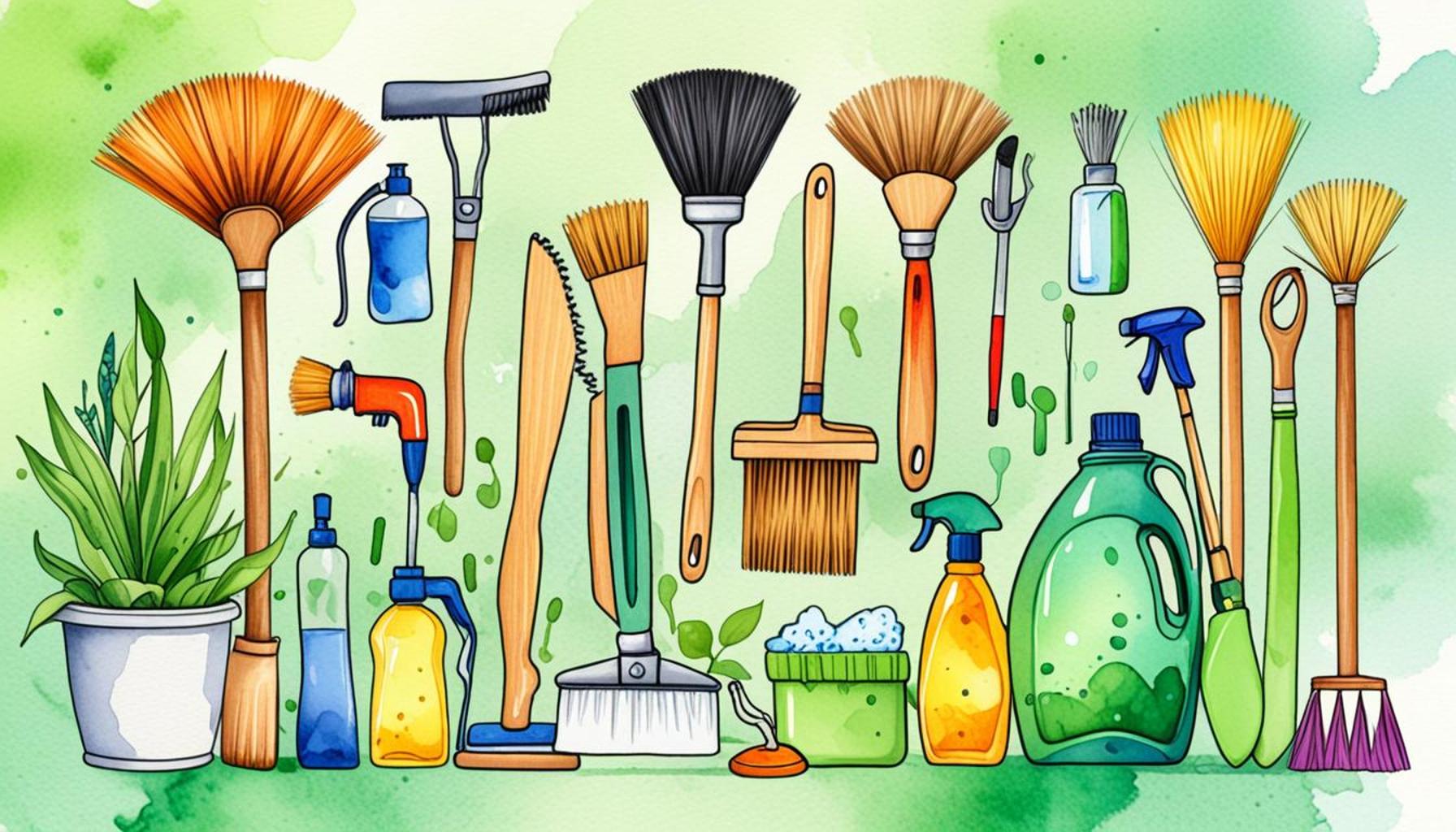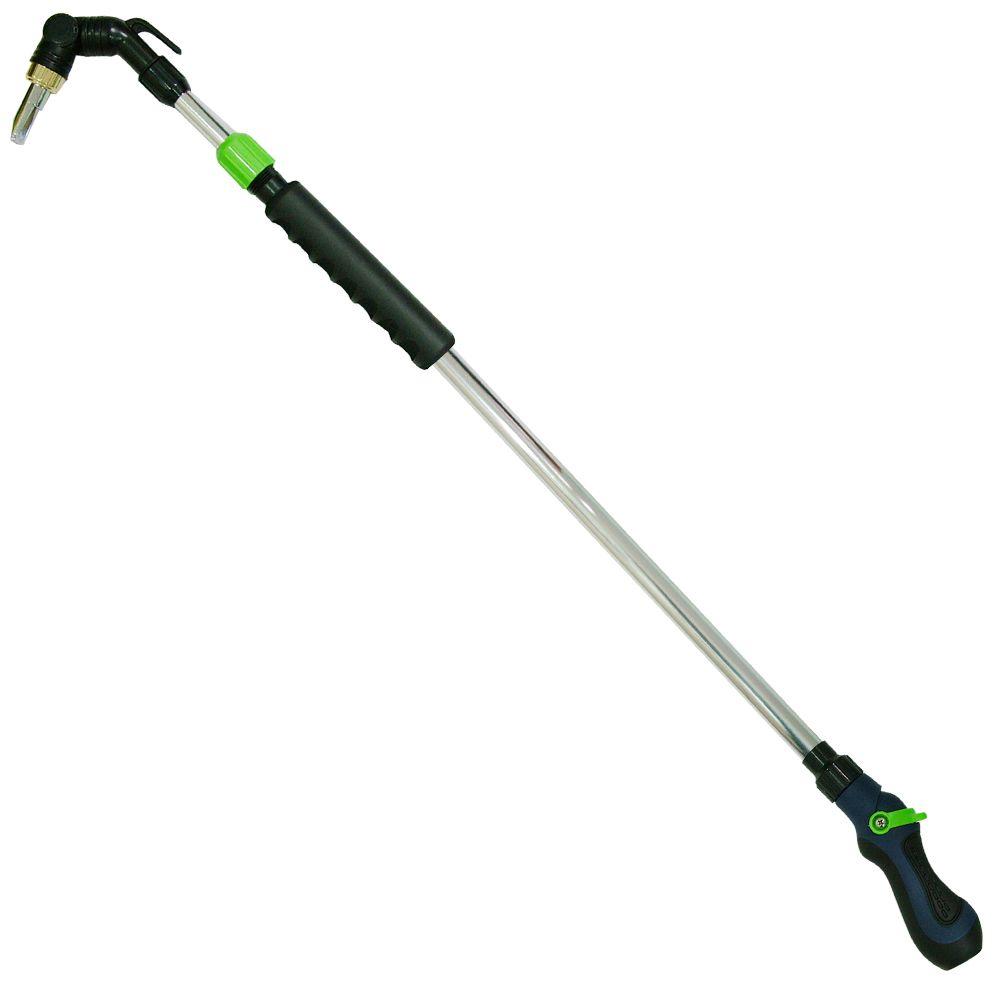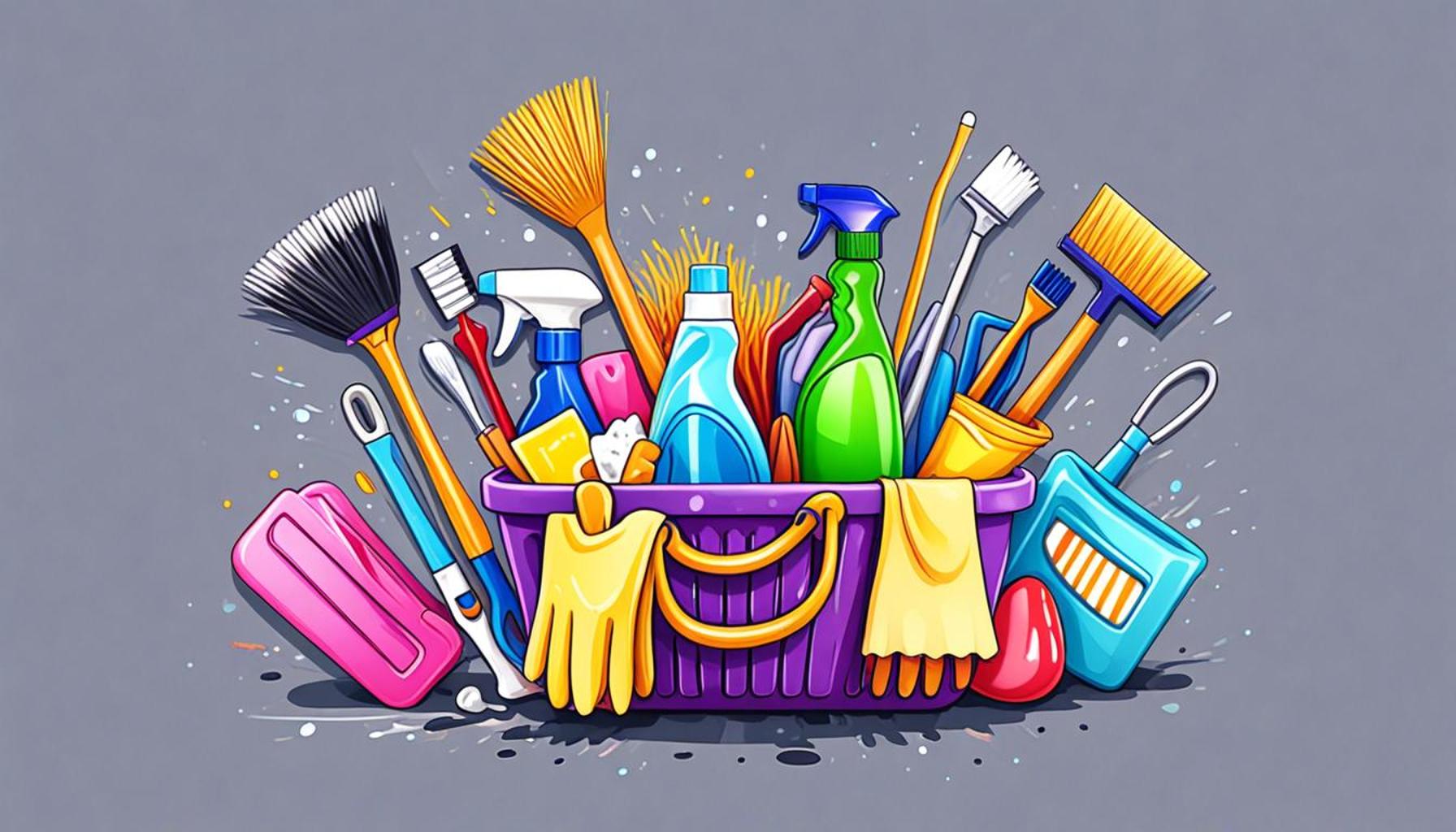The Role of Eco-Friendly Cleaning Tools in Sustainable Home Maintenance

Understanding the Shift Towards Eco-Friendly Cleaning Tools
As awareness of environmental issues continues to gain momentum, consumers across the United States are increasingly investing in eco-friendly cleaning tools. This shift represents not only a trend but a significant movement towards more sustainable living practices. By choosing these environmentally conscious alternatives, households can reduce their ecological footprint while creating cleaner and safer living spaces.
Why Choose Eco-Friendly Cleaning Tools?
The compelling reasons for opting for eco-friendly cleaning tools are numerous and impactful. First and foremost, using these alternatives contributes to healthier living spaces. Traditional cleaning supplies often contain volatile organic compounds (VOCs) and other harmful chemicals that can significantly degrade indoor air quality. For instance, ammonia and bleach, commonly found in conventional cleaners, can trigger respiratory issues and allergic reactions, particularly in children and pets.
Another key reason is the use of biodegradable materials. Eco-friendly cleaning tools, such as sponges, brushes, and mops, are typically made from natural fibers and materials that break down over time, thus reducing landfill waste. A prime example of this is the rise in popularity of bamboo cleaning brushes, which not only clean effectively but are also compostable at the end of their life cycle.
Moreover, the impact of chemical runoff on wildlife cannot be overlooked. Using non-toxic cleaning products helps protect local ecosystems from harmful pollutants that can leach into waterways and harm aquatic life. A study by the Environmental Protection Agency (EPA) highlights that even small quantities of household chemicals can disrupt local habitats, making eco-friendly cleaning a crucial choice for environmental stewardship.
Pathways to Sustainable Home Maintenance
Transitioning to eco-friendly cleaning tools aligns seamlessly with sustainable home maintenance practices. By making a conscious choice to switch, individuals can reap various benefits:

- Reduce Carbon Footprint: Many eco-friendly brands adopt sustainable production methods, such as using renewable energy sources and minimizing resources in their manufacturing processes, which can significantly diminish the overall carbon footprint associated with household cleaning.
- Support Local Businesses: Numerous eco-conscious companies prioritize local sourcing, which promotes community economies. By purchasing from these businesses, consumers are not only getting effective cleaning solutions but also investing in their local economies.
- Enhance Efficiency: Innovations in the design of eco-friendly cleaning tools often lead to superior performance compared to traditional products. For example, microfibre cloths can trap dust and dirt more effectively and require less water than regular cloths, making them a popular choice among environmentally mindful consumers.
As the market for environmentally friendly cleaning tools expands, so does the array of choices available to consumers. From reusable mop pads to all-natural cleaning sprays, the options are both diverse and effective. This article will further explore the various types of eco-friendly cleaning tools, examining their benefits and encouraging readers to integrate them into their home maintenance routines. Get ready to discover practical and impactful alternatives that not only keep your home clean but also show love for our planet!
DISCOVER MORE: Click here to enhance your cleaning routine with mindfulness
Different Types of Eco-Friendly Cleaning Tools
As the demand for eco-friendly cleaning options rises, diverse tools have emerged to cater to the eco-conscious consumer’s needs. These tools not only contribute to a cleaner home but also enhance the overall sustainability of household maintenance. Understanding the variety of eco-friendly cleaning tools available can empower consumers to make educated decisions that support their commitment to environmental responsibility.
Innovative Eco-Friendly Tools Leading the Change
Among the front-runners in the movement towards sustainable cleaning are reusable cleaning cloths. Traditional paper towels, which contribute significantly to landfill waste, have a sustainable alternative in the form of microfiber or cotton cloths. Microfiber cloths are exceptionally effective at capturing dirt and can eliminate the need for chemical cleaners, making them ideal for homes aiming for a zero-waste approach.
Another innovative product gaining traction are bamboo cleaning brushes. Bamboo is not only renewable but also naturally antimicrobial, which enhances cleanliness without introducing toxic substances into homes. These brushes serve multiple purposes, from scrubbing stubborn stains in kitchens to gently cleaning delicate surfaces, thus reducing the need for multiple specialized tools.
Additionally, eco-friendly mops equipped with washable pads have revolutionized floor cleaning. Unlike disposable mop pads that go straight to the trash after a single use, these reusable pads can withstand several washes, thereby reducing waste and providing an economical solution for consumers. The versatility of these mops allows them to be used on various floor types while minimizing the environmental impact.
The Multi-Faceted Benefits of Eco-Friendly Options
Incorporating eco-friendly cleaning tools into your home maintenance routine is not just beneficial for the environment; it also offers numerous advantages for families:
- Cost Savings: While initial investments in eco-friendly tools may be higher, they often lead to long-term savings. Products like reusable cleaning cloths and durable brushes replace disposable options, allowing consumers to spend less over time.
- Improved Indoor Air Quality: By eliminating harsh chemicals, households can enjoy cleaner air, reducing allergy symptoms and creating a safer space for children and pets. Studies have shown that households using eco-friendly cleaning options often report fewer respiratory issues over time.
- Eco-Friendly Brands: Many companies dedicated to producing eco-friendly cleaning tools engage in sustainable practices, often using recycled materials and ethical manufacturing processes. This means consumers can feel good about their purchases, knowing they are supporting brands committed to environmental conservation.
The increasing variety and accessibility of eco-friendly cleaning tools mark a critical shift in consumer behavior regarding home maintenance. As these alternatives gain popularity, it becomes essential for individuals to explore the options available and embrace sustainable cleaning practices. The next section will delve deeper into specific eco-friendly cleaning products and their unique environmental benefits, ensuring readers not only understand their importance but are also motivated to make the switch.
| Category | Advantages |
|---|---|
| Biodegradable Products | These products decompose naturally, reducing landfill waste and environmental pollution. |
| Chemical-Free Cleaning | Using eco-friendly tools minimizes exposure to harmful substances, promoting a healthier home. |
| Reusability | Sustainable cleaning tools often have a longer lifespan, reducing the need for constant replacement and waste. |
| Energy Efficiency | Many eco-friendly tools are designed to use less water and energy, contributing to lower utility bills and a smaller carbon footprint. |
Incorporating eco-friendly cleaning tools into your household maintenance routines not only supports personal health but also plays a pivotal role in sustainable environmental practices. Biodegradable products break down over time, aiding in waste reduction, while chemical-free alternatives ensure the air you breathe at home is safe and clean. Further enhancing sustainability, the reusability of many eco-friendly tools helps lower ongoing costs and waste. By embracing energy-efficient solutions, individuals can also significantly lessen their carbon footprint. This seamless integration into daily life fosters a culture of environmental responsibility that resonates throughout communities.
DISCOVER MORE: Click here for time-saving cleaning tips
Choosing the Right Eco-Friendly Cleaning Products
While eco-friendly cleaning tools are a significant step towards sustainable home maintenance, the impact of these products is magnified when paired with equally eco-conscious cleaning products. Choosing the right, non-toxic cleaners can enhance the effectiveness of these tools while ensuring a holistic approach to sustainability. Some key products worth considering include:
Plant-Based Cleaners
Among the frontrunners in eco-friendly formulas are plant-based cleaners. Unlike traditional cleaners laden with harsh chemicals, these natural solutions often derive their cleaning power from ingredients such as vinegar, baking soda, and essential oils. For example, a simple mixture of vinegar and baking soda can serve as a powerful degreaser and deodorizer in kitchens, negating the need for synthetic sprays that may introduce volatile organic compounds (VOCs) into the air. Research shows that households using plant-based cleaners experience not only cleaner surfaces but also a significant reduction in air pollutants, promoting a healthier living environment.
Essential Oils for Cleaning
Essential oils like tea tree, lavender, and lemon possess natural antibacterial properties, making them ideal additives to homemade cleaners. These oils not only help disinfect surfaces but also impart a pleasant aroma without artificial fragrances that can cause allergic reactions or affect indoor air quality. Moreover, using essential oils encourages mindfulness in cleaning, as consumers can choose scents that resonate with their personal preferences while also providing functional benefits.
Reusable Packaging and Bulk Buying
Many eco-friendly cleaning brands prioritize sustainability through reusable packaging and bulk purchasing options. This approach minimizes plastic waste associated with traditional cleaning product containers. For instance, companies like Blueland offer cleaning tablets that dissolve in water, allowing consumers to refill their existing bottles rather than buying new plastic containers each time. This model not only reduces waste but also promotes a less chemical-laden environment as consumers are encouraged to mix their cleaners at home.
Environmental Impact of Eco-Friendly Cleaning Products
The environmental benefits of eco-friendly cleaning products extend beyond individual households. With increased demand for sustainable options, companies are more likely to reduce harmful chemicals in their formulations. According to the Environmental Protection Agency (EPA), about 17 million tons of hazardous waste is produced annually from household products in the U.S. By opting for eco-friendly cleaning tools alongside responsible products, consumers contribute to reducing this considerable waste burden and foster a culture of environmental stewardship.
Additionally, many of these eco-conscious brands are committed to sustainable sourcing of their ingredients, utilizing local suppliers whenever possible. This practice not only lessens the carbon footprint associated with transportation but also supports local economies. The ripple effects of choosing eco-friendly cleaning options thus engage consumers in a broader narrative of sustainability.
As consumers integrate eco-friendly cleaning tools and products into their homes, they foster mindful practices that heighten awareness of environmental impact. This holistic approach serves as a model for sustainable home maintenance, encouraging others to join the movement toward healthier living spaces. By not only selecting the right tools but also the right cleaning formulations, individuals play an instrumental role in the shift towards eco-friendly practices in everyday life.
DISCOVER MORE: Click here for specialized cleaning techniques
Conclusion
The integration of eco-friendly cleaning tools into household maintenance signifies a transformative shift towards sustainable living. As we have explored, these tools not only prioritize the health of our families by minimizing exposure to harsh chemicals but also play a pivotal role in reducing our environmental footprint. By opting for products that are biodegradable, reusable, and made from natural materials, consumers can significantly reduce the pollution associated with traditional cleaning methods.
Moreover, when paired with natural cleaning solutions such as plant-based cleaners and essential oils, the effectiveness of these eco-friendly tools is enhanced. This synergy not only promotes cleaner homes but also fosters a lifestyle rooted in consciousness and responsibility towards the planet. It is essential to recognize that every small change contributes to a larger movement. According to the EPA, the choice to utilize eco-friendly products can collectively mitigate millions of tons of hazardous waste produced each year, marking a tremendous stride in environmental stewardship.
Ultimately, each household decision—whether it’s investing in reusable packaging or supporting local eco-conscious brands—contributes to a more sustainable future. As consumers become more informed and proactive, they can inspire others to adopt similar practices, further amplifying the impact of eco-friendly cleaning tools. By embracing this holistic approach to home maintenance, we not only ensure cleaner living spaces but also cultivate a culture that values sustainability for generations to come.


